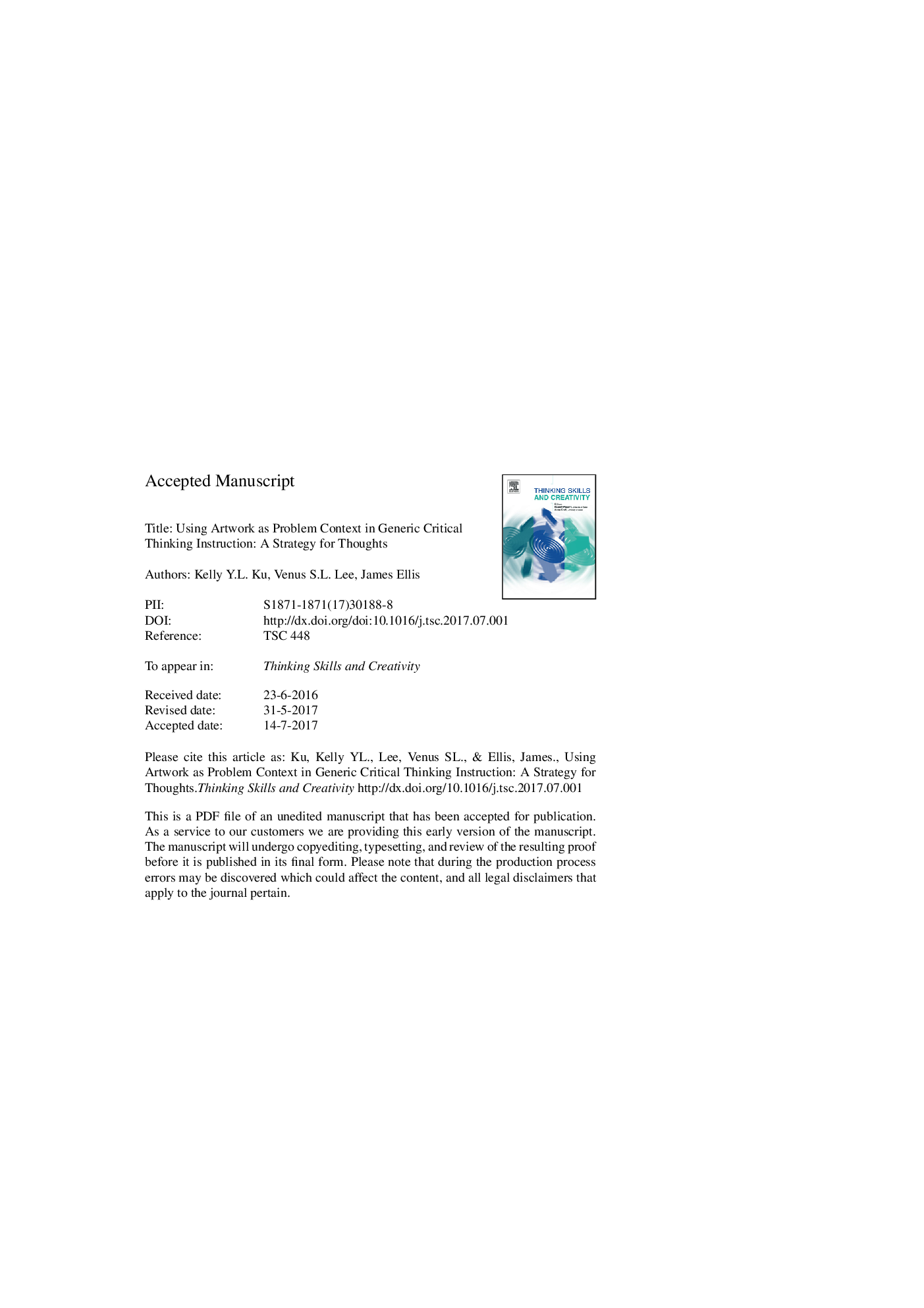| کد مقاله | کد نشریه | سال انتشار | مقاله انگلیسی | نسخه تمام متن |
|---|---|---|---|---|
| 4941883 | 1436834 | 2017 | 19 صفحه PDF | دانلود رایگان |
عنوان انگلیسی مقاله ISI
Using artwork as problem context in generic critical thinking instruction: A strategy for thoughts
ترجمه فارسی عنوان
استفاده از آثار هنری به عنوان زمینه مشکلی در آموزش تفکر انتقادی عمومی: استراتژی برای افکار
دانلود مقاله + سفارش ترجمه
دانلود مقاله ISI انگلیسی
رایگان برای ایرانیان
کلمات کلیدی
تفکر انتقادی، استراتژی آموزشی، هنر، تفکر خلاقانه،
موضوعات مرتبط
علوم انسانی و اجتماعی
روانشناسی
روانشناسی رشد و آموزشی
چکیده انگلیسی
The teaching of good thinking is in part about taxonomy of skills, and in part, about stretching one's awareness and sensitivity to all possible problem contexts. Inquiring about social issues is currently a common instructional strategy to enhancing generic critical thinking. It has been found effective in nurturing a mind that is structured and evidence-based (e.g., Angeli & Valanides, 2009; Ku, Ho, Hau, & Lau, 2014). Critical thinking, nonetheless, is “not mechanical” (Wegerif, 2007, p. 7). One current challenge is to integrate into the conventional logic-based practice of generic critical thinking instruction the 'soft' elements of thinking (Claxton, 1999). We argue that artwork presents itself as distinct and novel alternative to the more verbal-based learning materials that students are habituated. In observing and thinking about art images, pre-logical and preverbal thoughts and feelings that are otherwise not easily assessed can be elicited (Root-Bernstein & Root-Bernstein, 2003). Observing and imaging are primary thinking tools representing the more primitive, implicit, and sensual aspects of a person's reasoning. In this article, we reviewed evidence of existing generic critical thinking instruction, and illustrated a strategy that infuses visual artwork as the problem context into Halpern's (2003) Four-part Critical Thinking Instructional Model. There is a need for educators to acknowledge that any high quality thoughts must be a result of the mind simultaneously engaging in creation and critical evaluation of its creations (Paul & Elder, 2008). Though we are cautious not to make an automatic connection between reasoning about artwork and nurturing creative thinking, we considered our argument a step towards recognizing creative and critical thought as “integrated, and unitary” (Paul & Elder, 2006, p. 34).
ناشر
Database: Elsevier - ScienceDirect (ساینس دایرکت)
Journal: Thinking Skills and Creativity - Volume 25, September 2017, Pages 53-59
Journal: Thinking Skills and Creativity - Volume 25, September 2017, Pages 53-59
نویسندگان
Kelly Y.L. Ku, Venus S.L. Lee, James W. Ellis,
